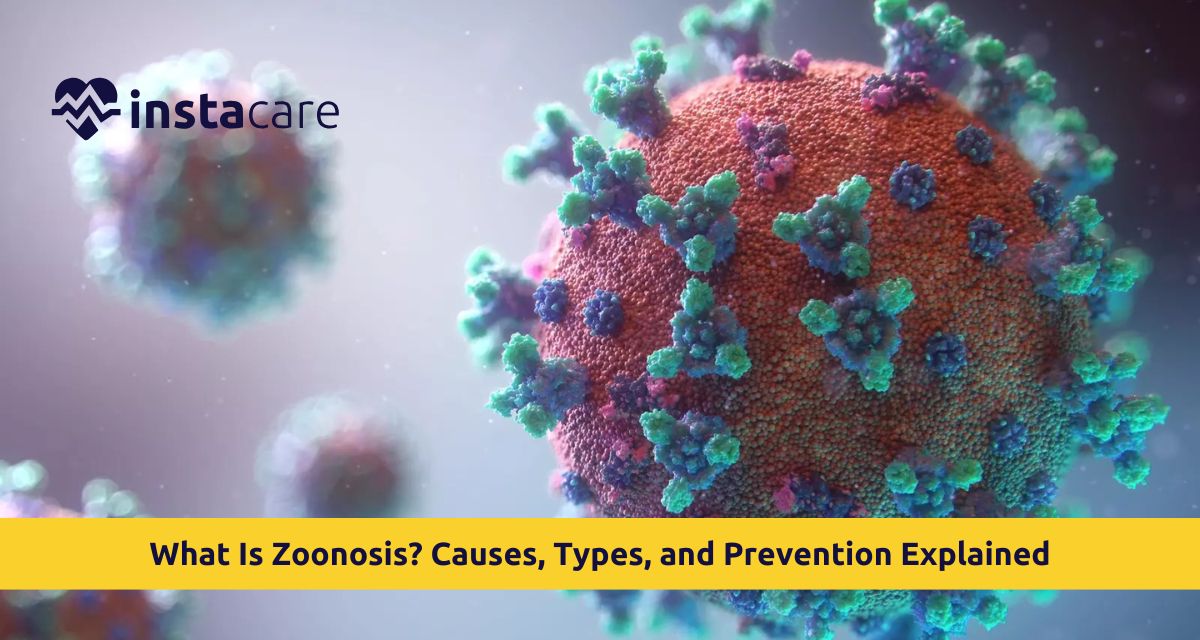What Are Zoonotic Diseases?
Zoonotic disease or zoonoses is also called the transmission of zoonotic diseases from animals to human beings directly or indirectly. In human beings, zoonotic disease in humans is acquired by contact with filthy animals, filthy surroundings, or by consuming food and water infected with the same. Fungi, parasites, viruses, and bacteria are some of the zoonotic pathogens that cause the spread of such a disease. Domestic and wildlife animals serve as reservoirs for the pathogens and thus pet and wildlife contact zoonotic disease poses a potential health risk.
Common Examples of Zoonotic Diseases
Examples of zoonosis depict the potential health risks:
- Rabies is spread through filth animal bites and always fatal except if treated early
- Lyme disease is spread by contaminated ticks' bite containing bacteria from filthy animals
- Avian influenza is transmitted from infected birds to man
- SARS-CoV-2 COVID-19 demonstrates the pandemic potential of new zoonotic disease
- Foodborne food poisoning or contact with infected reptiles lead to salmonellosis
- Feces of a cat or raw meat transmit toxoplasmosis
- Mosquito bite after biting an infected bird transmits West Nile virus
Causes and Risk Factors
Zoonotic disease transmission happens on various channels. Pathogen transmission is possible through direct contact with infected animals by bites, scratches, or body fluids. Indirect contact is possible through contaminated water, surface, or soil. Vector transmission like pathogen transmission by mosquito and tick is possible. Food transmission is carried out through the consumption of infected milk, eggs, or meat. Air-borne transmission is when air-borne pathogens inhaled near diseased animals.
Occupational exposure among veterinarians and farmers, residing in close proximity to wildlife, having pets with unhygienic living conditions, eating raw animal products, compromised immune system, and outdoor activities in areas where the disease is endemic.
Types of Zoonotic Infections
Zoonotic agents are grouped into four broad categories of types of zoonotic infections:
- Bacterial Zoonosis: Comprises the conditions such as Lyme disease, salmonellosis, anthrax, and plague. They are curable with the assistance of antibiotics if diagnosed in time but lead to maximum complications if not controlled.
- Viral Zoonosis: Comprises rabies, influenza viruses, COVID-19, Ebola, and West Nile virus. Viral infections do not encompass certain forms of treatment, and supportive treatment and, in certain cases, antiviral medication.
- Parasitic Zoonosis: Toxoplasmosis, trichinosis, and worm infestations are examples. All are a direct result of parasites having a part of their life cycle in animals and then infesting humans.
- Fungal Zoonosis: Less frequent, but ringworm, as well as histoplasmosis, are included. Fungal infestations can be extremely troublesome in immunocompromised patients.
Symptoms of Zoonotic Infections
Symptoms are unpredictable with the pathogen and infected body system. Common presentations consist of:
- Fever, malaise, myalgia, headache
- Nausea, diarrhea, rash
- Respiratory and neurologic signs and symptoms in overwhelming infections
Some zoonoses present in a mild symptomatic presentation, while others present with an acute, life-threatening illness that must be medically managed emergently.
Diagnosis of Zoonotic Diseases
The diagnosis of zoonotic disease includes rigid assessment of recent animal contact, travel, and signs. The tests utilized in laboratory diagnosis are:
- Blood testing for the detection of pathogen or antibody
- Bacterial or viral culture
- Imaging methods
- Molecular tests such as PCR
Early diagnosis renders the treatment and prevention against the disease extremely useful.
Treatment and Management
Treatment is after the causative agent. Antibiotic treatment is characteristic of bacterial zoonosis. Hydration, supportive care, and symptomatic treatment are characteristic treatments of viral zoonosis, and antiviral treatment in some cases. Antiparasitic medication is utilized for parasitic zoonosis, and antifungal medication is utilized for fungal zoonosis. Intensive care or hospitalization is involved with severe manifestations. Post-exposure rabies prophylaxis continues to be indicated following potential exposure.
Prevention of Zoonotic Diseases
Prevention of zoonosis is good public health policy and individual protective practice. Zoonosis prevention includes:
- Practice pet health by visiting the veterinary on regular basis for vaccination and check-up
- Practice food safety by cooking meat to the correct temperature
- Practice hygienic habits by handwashing after handling animals and raw meat
- Practice by wearing protective equipment when handling animals professionally
- Don't play with wild animals
- Implement control vectors with the aid of mosquito repellents and protective equipment
- Keep up with emerging zoonotic diseases around you
The Role of the "One Health" Approach
One Health understands the interconnectedness of animal, human, and environmental health. One Health is an interactive model in which specialists collaborate in prevention and response to zoonotic disease risk. One Health programs track emerging disease, provide surveillance systems, encourage prudent use of
antibiotics, conserve natural habitats, and design human- and animal-friendly vaccines. The interactive model is central to prevention and control of animal to human disease transmission.
Future Challenges and Research
The impact of zoonosis on public health is increased by a number of factors:
- Global warming reorganizes the range and distribution of vectors and pathogens
- Growing human population densities and urbanization place people in close proximity to wildlife
- International travel and trade make disease spread easier through rapid communication
- Habitat destruction and deforestation increase human-wildlife contact
- Pathogen transmission can be facilitated by intensive agricultural systems
Science allows for the creation of better diagnostic tests, creating effective treatments and vaccines, deciphering pathogen evolution and transmission, taking advantage of early warning systems, and constructing more resilient global surveillance. Stopping new zoonotic diseases necessitates ongoing investment in research, surveillance, and international collaboration.
Conclusion
Zoonotic disease is an actual menace to public health, from endemic infection to pandemic disaster. Identification of the type of zoonosis—bacterial zoonosis, viral zoonosis, parasitic zoonosis, and fungal zoonosis—is the central in identification of the hazards. Zoonosis is transmitted by more than one route including zoonotic diseases from pets and wildlife. Hand washing, pet keeping hygiene, and food handling prevent zoonosis.
One Health is a global concept to animal to human disease avoidance. As long as the newly emerging zoonotic diseases pose a threat to health systems, extra awareness, research effort investment, and international action are also necessary for the safeguarding of animal as well as human populations.
Please book an appointment with the
best General Physician in Lahore, Karachi, Islamabad, and all major cities of Pakistan through
InstaCare, or call our helpline at 03171777509 to find a verified doctor for your disease.

